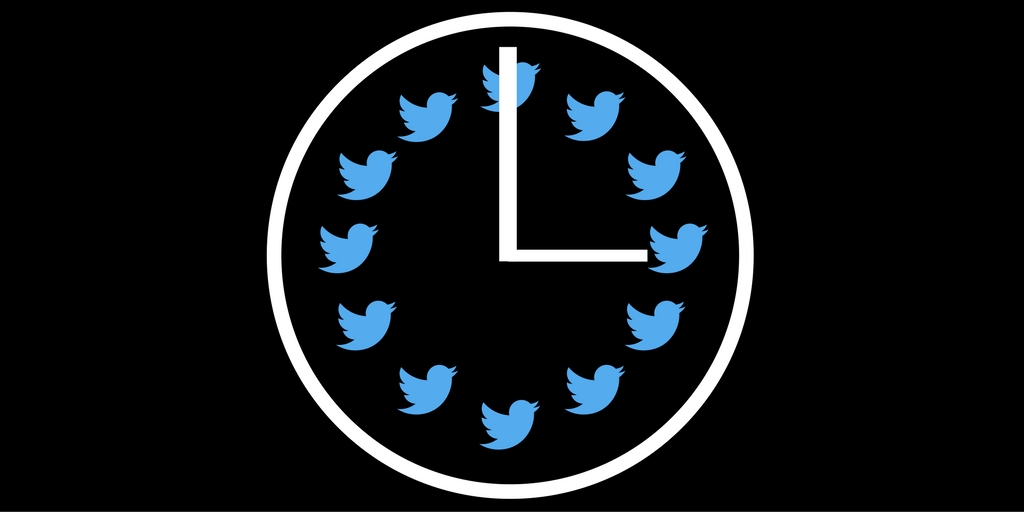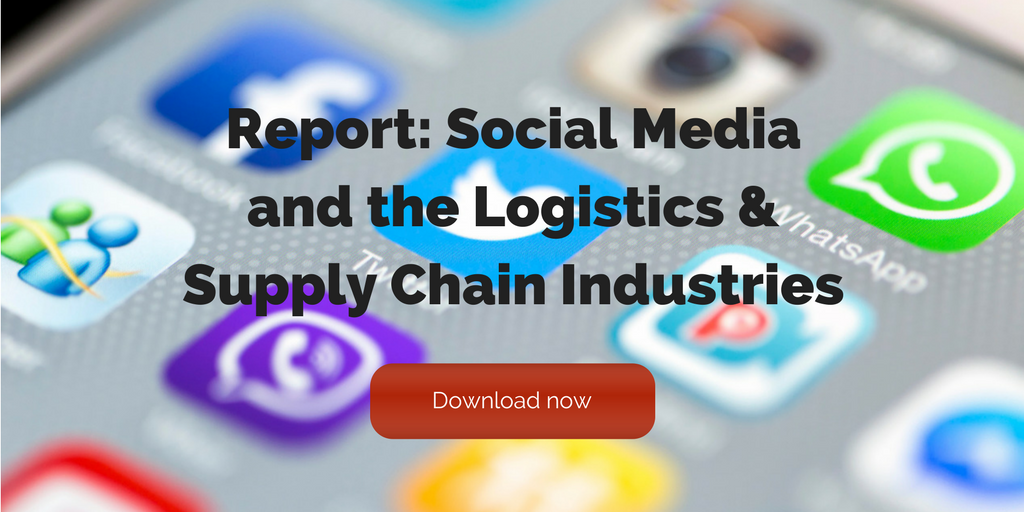
by Fronetics | Apr 26, 2016 | Blog, Strategy
 Engage your leads early in meaningful dialogue to improve your chances of conversion.
Engage your leads early in meaningful dialogue to improve your chances of conversion.
Your strategic marketing plan is generating a steady influx of quality leads, so closing sales should be easy, right? Only if you are contacting your leads early enough in the sales cycle.
Leads become sale opportunities if they are approached like a garden. Care is needed from the start to cultivate and produce the desired results. So, when is the perfect time to begin nurturing leads? It is earlier than you might think.
When a potential customer first shows interest in a blog post, opens an email, or shares your company’s post on social media, this is the first point of positive contact. You needs to keep that contact going and develop it into a conversation. And we are not talking about starting out with a sales pitch, either. Leads become sales when they are cultivated and grown like a trusted relationship — and the earlier after first contact the better.
According to a study published in the Harvard Business Review, most companies are not responding nearly fast enough to their sales leads. The authors audited more than 2,200 businesses and measured their response time to web-generated leads. While only about a third (37%) responded within an hour, the average first response time was 42 hours. Surprisingly, 23% of companies never responded.
Google and Corporate Executive Board’s white paper on lead follow-up offers some insight on why quick responses are so important. For one, a reported 35% to 50% of sales go to the vendor that responds first. That is largely because today’s B2B customers are nearly 60% through the sales process before they first engage a sales rep. By the time you hear from them, they are close to buying and want answers in a timely fashion to make their decision.
So, how fast of a response is ideal? A study conducted by Franklin Covey found that contact ratios improve 900% if web leads had some form of contact by the company within five minutes of submission. Now, it is probably not possible for your sales team to act upon every lead with that kind of velocity, but it is vital that they utilize proactive sales strategies, rather than reactive.
Reactive is leaving a message and, if they hear back, responding to it. Proactive is going after the sale with confidence and commitment to engaging the lead in real dialogue.
Early dialogue: What it is, and what it’s not
Early on in the sales cycle, you are not pushing to close the sale, but rather you are building a relationship through conversations. You are creating dialogue, not a sales monologue. Be there first, be relevant, and be action-oriented, and your customers will rely on your solutions more often.
You begin this dialogue by asking great, open-ended questions, essentially taking the time to get to know the potential customer. This helps you determine what will best suit this prospect’s needs, and it builds confidence and trust and will very often help the prospect consider issues they may never have thought of.
When you get that potential customer thinking outside the boundaries of their initial issue, it provides a bigger opportunity for you to showcase how your services or products can solve several of the customer’s dilemmas. It is also important to consider your products or services in terms of how they benefit the customer; your presentation will then be customer-focused, and that builds trust and respect in the relationship.
There many moving parts to an effective lead-nurturing campaign, and often there are many steps required to cultivate those leads into sales. From the start of the sales cycle, your company should:
- Take the time to discover and understand the potential customer’s needs and wants first, then advise and offer information. Make the move to match and sell the appropriate solution your company can offer.
- Have the ability to listen and offer viable solutions. Your sales team needs to be well informed about the products, services, and solutions that they are selling.
- Your sales team must be able to follow up quickly, consistently, and with an open dialogue to turn leads into customers.
Studies show that the faster you begin dialogue with a lead, the better your chances of conversion into a sale. This means that when cultivating a qualified lead, you don’t want your sales reps to make one phone call and simply leave a voicemail. You want real conversations to happen. If you don’t, your lead-generation efforts were for naught.
Related posts:

by Fronetics | Apr 25, 2016 | Blog, Strategy, Supply Chain

Image source: tomicpasko | Flickr
They are your employees. They are your customers. Pretty soon, Millennials will be the supply chain.
As Millennials now outnumber Generation X and Baby Boomers in the workforce, shifts in ideas and processes were inevitable. But this generation is having an even more palpable impact: They are reshaping the economy as we know it, forcing businesses to reexamine traditional methods of buying and selling to accommodate their unique preferences and experiences.
A 2014 survey found that 46% of B2B buyers were Millennials, and that number is on the rise. Their preferences and behaviors are having a noticeable impact on B2B buyer behavior as a whole. In short, the supply chain should be prepared to change the way business is conducted to account for this generation’s impact.
Who are Millennials?
The term “Millennials” describes the generation of Americans born between 1982 and 2000. The more than 83 million Millennials represent a quarter of the US population, and are more diverse than any previous generation, with 44.2% being a part of a minority race or ethnic group.
Millennials are generally highly educated, though often underemployed and saddled with debt. They are digital natives who are decidedly collaborative by nature. Having grown up in a time of rapid technological advancement, their expectations and priorities are much different than previous generations. They’re delaying marriage and parenthood in favor of higher education and travel, fueling their strong sense of optimism. And they generally are reluctant to make major purchases — like homes, cars, and even music — instead favoring services that provide access to products without ownership, fueling the growth of the collaborative economy.
Ads be gone
Bombarded with over 5,000 marketing messages a day, every day for their entire lives, Millennials are able tune out traditional advertisements. They are turned off by direct sales pitches and much prefer word-of-mouth recommendations or joining communities around brands they like to learn about products and services. They are easily incentivized and want to be rewarded for their brand loyalty with things like discounts, access to information, and personalized communications.
Reshaping retail
Millennials are highly attached to technology. More than half go online multiple times per day, while more than a third (36%) report going online “almost constantly.” Approximately 90% are active on at least one social media network. They expect brands and businesses to have a digital presence and engage with them online — especially if they have a complaint or problem.
Having the internet at their fingertips shapes how Millennials shop. Their constant access to product information, user reviews, and price comparisons allows them to favor brands and products that offer maximum convenience at the lowest cost. Catering to their proclivity for the best for the least, giant retailers like Amazon have reset expectations for shipping times, availability, and price.
Millennials have taken shopping mobile. Around 92% will use a mobile device while they shop, and 78% will use an app to shop. And the revolution is far from over : Artificial intelligence, robots, and drones represent a new wave of technology that many tech companies, driven by Millennial innovators, are just a short step from achieving.
Related posts:

by Fronetics | Apr 14, 2016 | Blog, Marketing, Strategy, Supply Chain

If you’re looking for the latest news and information about happenings in the industry, you should have these five supply chain websites on your radar. In no particular order:
www.dcvelocity.com
Facebook | Twitter | LinkedIn | Google+
DC Velocity is a multi-media magazine serving the informational needs of logistics and supply chain managers and executives. The website is updated on a daily basis with the latest in industry-related news and educational content, written by fellow supply chain professionals. Content includes:
- Best practices/case studies
- Emerging technology
- Labor issues
- Management trends
- New products and services
- New market research
- Equipment profiles and reviews
- Professional development and enrichment opportunities
- Columns and Q&A interviews with industry thought leaders
- Special reports, including:
- Salary surveys
- Best practices awards
- Annual state of the industry spotlight
DC Velocity also regularly posts exclusive news, case studies, seminars, and user-content on their video channel, DCV-TV.
Also check out sister publication Supply Chain Quarterly. This high-quality source for industry intelligence offers cutting-edge ideas on all aspects of the global supply chain, from product design, procurement, transportation, and warehousing to human resources, information technology, and finance.
Read my blog on productivity for DC Velocity.
electronicspurchasingstrategies.com
Facebook | Twitter | LinkedIn
Electronics Purchasing Strategies is a vibrant online community and resource center for buyers, sellers, and suppliers of components, design, distribution, logistics, production, and other services to the global electronics manufacturing industry. Industry strategists and those that serve in the trenches share their ideas about everything from inventory tracking to supply chain planning. Specifically, EPS focuses on the following subjects:
- Economy
- Government and industry rules and regulations
- Purchasing and manufacturing strategies
- Contract manufacturing
- Distribution
- Logistics
- Software development
- Component manufacturing
- Trends with a focus on interconnects, passives and electromechanical devices
Also, I regularly contribute to EPS’s blog — see what I’ve been writing about lately.
www.logisticsmatter.com
Facebook | Twitter | Google+ | Pinterest
LogisticsMatter is an independent supply chain news aggregator and blog covering industry trends and developments, written by founder Martijn Graat. Very conversational with a sleek, modern design, this site offers information about the many challenges one encounters working in the supply chain industry — from handling returns to emerging technologies. Subject areas include 3PL, logistics, supply chain, transportation, shipping, sustainability, and social media.
Be sure to follow Graat/LogisticsMatter on Pinterest, a rare industry presence on the social media platform, where he regularly shares infographics about the supply chain and logistics industries.
www.supplychainbrain.com
Facebook | Twitter | LinkedIn
SupplyChainBrain is touted as the world’s most comprehensive supply chain management information resource, written by experienced industry professionals and trusted content partners. In addition to providing complete coverage of all fundamental supply chain principles, this site identifies emerging trends, strategies and best practices, forward-thinking ideas, cutting-edge solutions, and the latest innovations — and continues to write and report on these as they evolve and mature.
The website features 70 topics, over 2,000 videos, regular podcasts, a think tank of blogs, whitepapers, and research, as well as a list of resources, just in case all of that was not enough for you.
www.supplychain247.com
Facebook | Twitter
Supply Chain 24/7 is an informative online business resource for transportation, distribution, logistics, and supply chain professionals. Select from webcasts, whitepapers, news, and photos, or search for a company overview by industry or trending industry topic. Subject areas include transportation, manufacturing competitiveness, warehouse and distribution centers, and the latest trends from the supply chain industry and the technologies that serve it.
What are your go-to supply chain websites?
Related posts:

by Fronetics | Apr 12, 2016 | Blog, Content Marketing, Marketing, Strategy
Content drives business growth, builds customer loyalty, and helps nurture leads.
One of the best ways to market your business today is to plant the seeds that will generate new customers tomorrow. Enter, content marketing: a long-term solution that helps businesses build brand awareness, grow their audience, and generate new leads and sales.
Most companies, more than 85% of them, realize that content marketing is a vital component to cultivating growth. But, according to the Content Marketing Institute, less than half of those who use it believe they do it well.
It may be particularly difficult for smaller businesses to justify allocating precious time and resources to a strategy that they are not sure is being executed properly. How can they compete against industry giants that have name recognition and massive budgets working for them already?
Medium-sized to smaller companies need to establish a relationship with their potential customers or clients and drive brand awareness, accomplishing this goal with far less resources. And content is the way a company makes that all-important connection.
With quality content, you become a source of knowledge and advice. Most importantly, it reaches potential customers where they most often look for new information: online. Whether a blog, white paper, webinar, video, or social post, you are creating brand awareness and building trust by distributing content. Establishing your company as a reliable source of knowledge is what makes a customer eventually choose to do business with you.
Content Works Overtime
Through your content strategies, you have an endless opportunity to provide potential customers with information about your business, your services, products, tips, or simply advice. The best part is as long as it is good, quality content, on topics that speak to potential customers’ needs and questions, it will continue to generate sales leads.
According to the Harvard Business Review article on the subject, “In both B2B and B2C businesses, customers are doing their own research both online and with their colleagues and friends. Prospects are walking themselves through the funnel (where they gain knowledge for buying decisions), then walking in the door ready to buy.”
Coined by McKinsey, the metaphor of a “funnel” describes where consumers start with a number of potential brands in mind then methodically narrow down their choices. At the end, they emerge with the one brand they chose to purchase from. With social media and digital marketing, content is now a huge factor in the “customer decision journey”.
Will Content Work for Me?
A successful content marketing allows your business to reach more and more potential new customers each week. However, there are some requirements for content to properly do its job.
- Content needs to be consistent (frequent, fresh posts)
- Content must be engaging (taps into what people really want/need to know)
- Content must be good quality (entertains and informs: potential customers should learn something from it and walk away feeling that your company knows what it is talking about)
According to Inc. magazine, it is best to take a holistic approach to your content marketing plan. First you must write down your strategy and be able to tie your overall business goals and objectives into your content calendar.
This is your path and serves as an ongoing content guide. Statistically, only 11% of companies without a documented content marketing strategy find their efforts to be successful, versus 60% of companies with a strategy in place. Designate someone to lead your strategy, and success rises to 86%. In fact, according to a survey by the Content Marketing Institute, the majority of the most effective B2B marketers (86%) have a designated person overseeing their content marketing strategy; versus the 46% of less-effective marketers who do not.
Also remember, content marketing’s main objective is lead nurturing, not producing instant results. You will slowly develop a loyal following of readers and content consumers who continue to return to you for knowledge and, ultimately, your product or services.
Related articles:

by Fronetics | Apr 11, 2016 | Blog, Content Marketing, Marketing, Social Media

What is the ideal frequency for posting to Twitter? We did the experiment.
 I came across an article on Socialbakers that suggested that posting to Twitter three times per day is the ideal frequency for brands. Intrigued by this statistic, I looked further and found that Buffer posts to Twitter 14 times per day.
I came across an article on Socialbakers that suggested that posting to Twitter three times per day is the ideal frequency for brands. Intrigued by this statistic, I looked further and found that Buffer posts to Twitter 14 times per day.
At Fronetics we typically post content to Twitter an average of 40 times per day. That’s an average of 40 times per day for Fronetics, and an average of 40 times per day for each of our clients. That’s a lot of time on Twitter. Given this, the numbers given by Socialbakers and Buffer caught my attention. Could we reduce the frequency to which we post to Twitter and keep (or even increase) engagement and ROI? We decided to do the experiment.
The results
As shown in our social experiment infographic, when we reduced the number of times we post to Twitter from 40 times per day to 15 times per day, our engagement and ROI plummeted.
Not only did we realize close to a 50% decline in traffic to the website, we also realized a 33% decline in new contacts. That’s a 33% decline in our lead pipeline.
We also realized a decline in link clicks (58%), profile visits (61%), retweets (65%), and new followers (39%). In short, our engagement numbers took a dive – off a cliff.
So, how often should you tweet?
Although the numbers were abysmal, the experiment was a good one. It showed that, for Fronetics, posting to Twitter at a frequency of around 40 times per day is right for our company.
Does that mean the frequency is right for each of our clients? No. Does it mean that the frequency is right for your business? No. What it means is that there is no magic number when it comes to the ideal frequency for posting to Twitter.
Your company, or your marketing partner, should conduct due diligence and determine what the right frequency is for your business. Yes, you may realize a significant decline in engagement in ROI during your experiment. On the other hand, you may realize an increase in engagement and ROI — captured with lower output in terms of time and resources.
Do the experiment. I’d love to hear your results, and learn what frequency works for your business.
Not tracking your metrics on a monthly basis? Start now. Metrics enable you to measure success, drive strategy, and demonstrate the ROI of your marketing efforts.
Related posts:


 Engage your leads early in meaningful dialogue to improve your chances of conversion.
Engage your leads early in meaningful dialogue to improve your chances of conversion.







